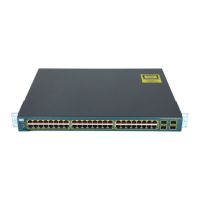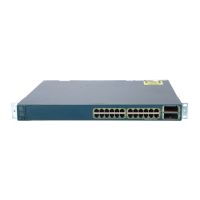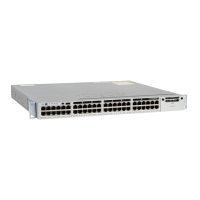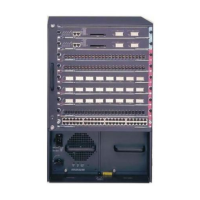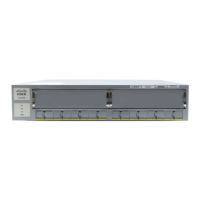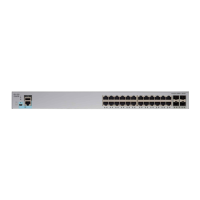1-5
Catalyst 3750 Switch Software Configuration Guide
78-16180-02
Chapter 1 Overview
Features
• Cisco Discovery Protocol (CDP) Versions 1 and 2 for network topology discovery and mapping
between the switch and other Cisco devices on the network
• Network Time Protocol (NTP) for providing a consistent time stamp to all switches from an external
source
• Cisco IOS File System (IFS) for providing a single interface to all file systems that the switch uses
• In-band management access through CMS over a Netscape Communicator or Microsoft Internet
Explorer browser session
• In-band management access for up to 16 simultaneous Telnet connections for multiple CLI-based
sessions over the network
• In-band management access for up to five simultaneous, encrypted Secure Shell (SSH) connections
for multiple CLI-based sessions over the network (requires the cryptographic versions of the SMI
and EMI)
• In-band management access through SNMP Versions 1, 2c, and 3 get and set requests
• Out-of-band management access through the switch console port to a directly attached terminal or
to a remote terminal through a serial connection or a modem
Note For additional descriptions of the management interfaces, see the “Network Configuration Examples”
section on page 1-12.
Availability Features
• HSRP for command switch and Layer 3 router redundancy
• Automatic stack master re-election for replacing stack masters that become unavailable (failover
support)
The newly elected stack master begins accepting Layer 2 traffic in less than 1 second and Layer 3
traffic between 3 to 5 seconds.
• Cross-stack EtherChannel for providing redundant links across the switch stack
• UniDirectional Link Detection (UDLD) and aggressive UDLD for detecting and disabling
unidirectional links on fiber-optic interfaces caused by incorrect fiber-optic wiring or port faults
• IEEE 802.1D Spanning Tree Protocol (STP) for redundant backbone connections and loop-free
networks. STP has these features:
–
Up to 128 spanning-tree instances supported
–
Per-VLAN spanning-tree plus (PVST+) for balancing load across VLANs
–
Rapid PVST+ for balancing load across VLANs and providing rapid convergence of
spanning-tree instances
–
UplinkFast, cross-stack UplinkFast, and BackboneFast for fast convergence after a
spanning-tree topology change and for achieving load balancing between redundant uplinks,
including Gigabit uplinks and cross-stack Gigabit uplinks
• IEEE 802.1s Multiple Spanning Tree Protocol (MSTP) for grouping VLANs into a spanning-tree
instance and for providing multiple forwarding paths for data traffic and load balancing and rapid
per-VLAN Spanning-Tree plus (rapid-PVST+) based on the IEEE 802.1w Rapid Spanning Tree
Protocol (RSTP) for rapid convergence of the spanning tree by immediately transitioning root and
designated ports to the forwarding state

